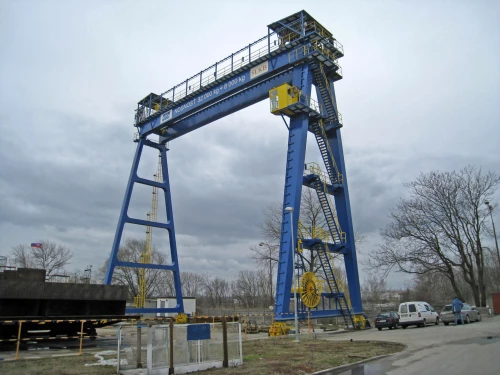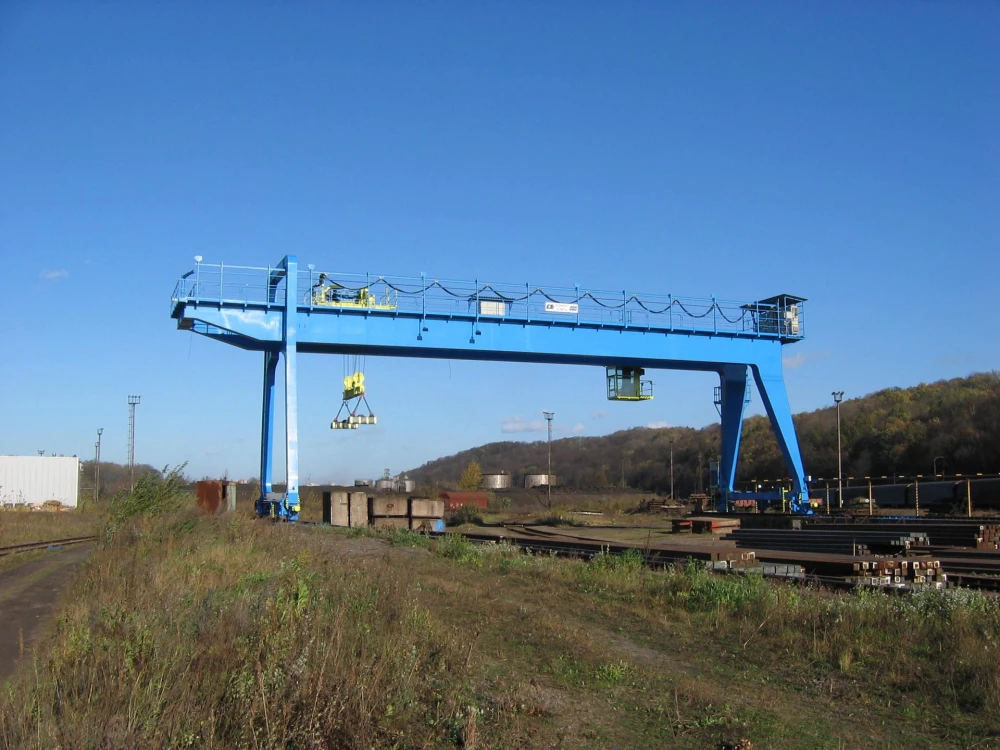Gantry and semi-gantry cranes can be also stationary (without travelling wheels), with legs (leg), anchored in blocking-up base. They can have one or both sides of the main girders with cantilever brackets (overhanging end).
They have the same gripping appliances as overhead cranes.
Gantry cranes
Gantry cranes are used mainly in situations, when crane is located in open area. The specific feature of gantry cranes is their supporting steel structure – gantry, which consists mainly of one or two main girders, that are supported by struts or legs with cross bars, fitted with travelling wheels.
 Gantry crane 25t
Gantry crane 25t Gantry crane 16t-45+12,5+19,2
Gantry crane 16t-45+12,5+19,2 Gantry crane 32t
Gantry crane 32tCrane trolley travels on the main girders, eventually it is suspended below them. Crane travels on steel rails, that are fixed to the concrete body of crane runway, built into the ground space. Electric supply (main power line) is mostly solved by cable on cable drum, eventually by power line in parallel cable duct. Crane is controlled from cabin, by remote control or by pendant push-button panel.
Semi-gantry cranes
Semi-gantry cranes are used mainly in situations, when crane is admittedly located in hall, but one side can travel on crane runway, mounted on pillars. The other side with leg travels on crane runway, seated in the hall floor. The specific feature of semi-gantry cranes is their supporting steel structure – semi-gantry, which consists of one, two or multi main girders, and only of one leg.
Electric supply (main power line) is mostly solved by longitudinal main power line, fixed at the top run of crane runway.
Crane is controlled from cabin, by remote control, eventually by pendant push-button panel.







